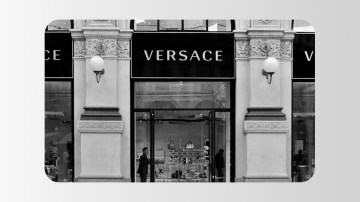Rose Murray, senior content editor, Scayle
In light of the recent global tariff turmoil and the resulting economic uncertainty, customer loyalty is more fragile than ever. According to Scayle’s 2025 shopper survey, shoppers are gravitating towards a higher level of cost consciousness. As a result, 36% of U.S. consumers admit they would ditch their favorite brand for a better price elsewhere. So, how do beauty and fashion brands protect their business from this price sensitivity pandemic to maintain their customers’ favor without slashing prices into unprofitability?
Consumers are shopping with caution
As rising costs and economic uncertainty squeeze household budgets, shoppers are scrutinizing every purchase. Price has become the first filter. Before aesthetics or brand loyalty enter the equation, customers scan for cost — if the perceived value doesn’t hold up, they move on without hesitation.
Financial anxiety has made value perception the main battleground. Beauty and fashion brands that fail to demonstrate why their product is worth the price risk losing shoppers long before checkout. In a market this tense, even small doubts can derail a sale.
Cutting prices might boost sales in the moment, but will likely cause a rude awakening in the long run. With new trade tariffs and ongoing supply chain disruptions reshaping global commerce, businesses that rely on imports are already grappling with rising costs. And the rest is likely to fall victim to the resulting snowball effect. As a result, pricing increases will likely be inevitable.
Pricing that prioritizes perceived value
So the real question isn’t how to avoid increases, it’s how to bring customers along for the ride. Practicing transparency, building trust and strengthening perceived value is what makes shoppers feel like they’re purchasing something worthwhile, and it means they’re prepared when adjustments happen.
Flexible payment options like buy-now-pay-later (BNPL) and zero-interest installments help ease the psychological barrier to purchase. At the same time, 21% of Gen Z and 23% of Gen X are embracing secondhand purchases, creating opportunities for enterprise brands to launch trade-in programs or curated resale collections that appeal to price-conscious shoppers without devaluing core inventory.
Loyalty that feels personal, not programmed
Loyalty hinges on relevance. What keeps shoppers engaged today isn’t a points system: it’s benefits that feel timely, personal and worthwhile. During economic downturns, nearly 1 in 4 shoppers engage more with loyalty programs, and what they value most is clear: 49% want regular discounts, 36% prioritize free shipping and BNPL and 25% want free returns. Tiered models that reward browsing, not just buying, keep shoppers invested even when spending slows. In tough times, it’s the perceived value of staying loyal, not the gamification, that wins.
Subscriptions that offer flexibility, not friction
In uncertain times, e-commerce subscriptions can offer a welcome sense of consistency for shoppers and retailers alike, but they only work when they fit into real life. Three out of 5 shoppers are open to subscribing to frequently used products, but only if it doesn’t feel like a trap: cancellation, pauses and exclusive perks matter. Gen Z is leading the way, signaling that more flexible access models could soon become standard rather than special.
Infrastructure matters: When tech is the underlying symptom
Price sensitivity can’t be fought with rigid tech. A bloated, inflexible e-commerce tech stack can’t pivot fast enough. When every change requires a developer ticket and integrations take months, a brand’s pricing strategy is likely already outdated before it hits the market. That’s why unified, composable commerce platforms empower teams to test promotions and bundles on the fly; roll out localized pricing across global markets; adjust shipping, returns and payment methods dynamically; and integrate tools to automate price testing and recommendations.
End-to-end value preserves loyalty for long-term success
Price sensitivity is a structural shift in consumer psychology. Building resilience requires more than aggressive markdowns or one-off promotions. Consistent relevance, frictionless experiences and flexible engagement models across pricing, fulfillment, loyalty and technology all influence how value is perceived at every step.
And in an uncertain economic environment where market conditions can shift overnight, optimizing commerce operations to pivot and respond swiftly is one of the most sustainable things retailers can do.
When value becomes visible at every stage of the customer journey, beauty and fashion brands don’t just preserve loyalty, they build the kind of flexibility and trust that can weather whatever comes next.
Sponsored by Scayle




